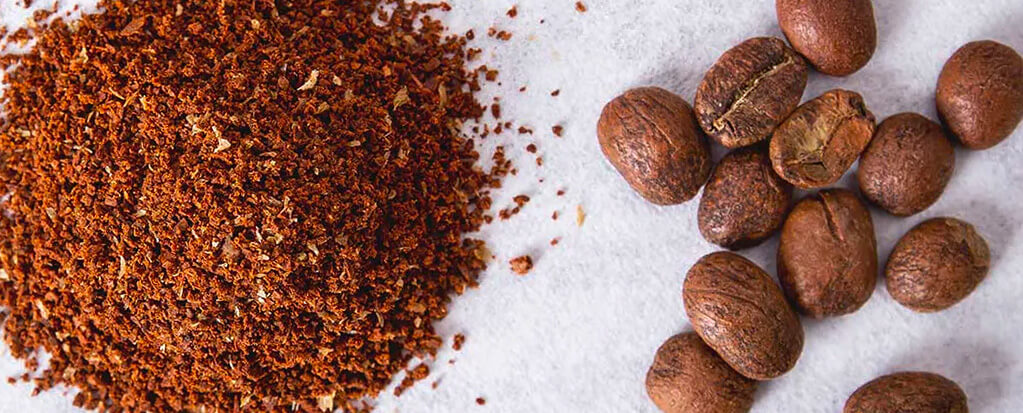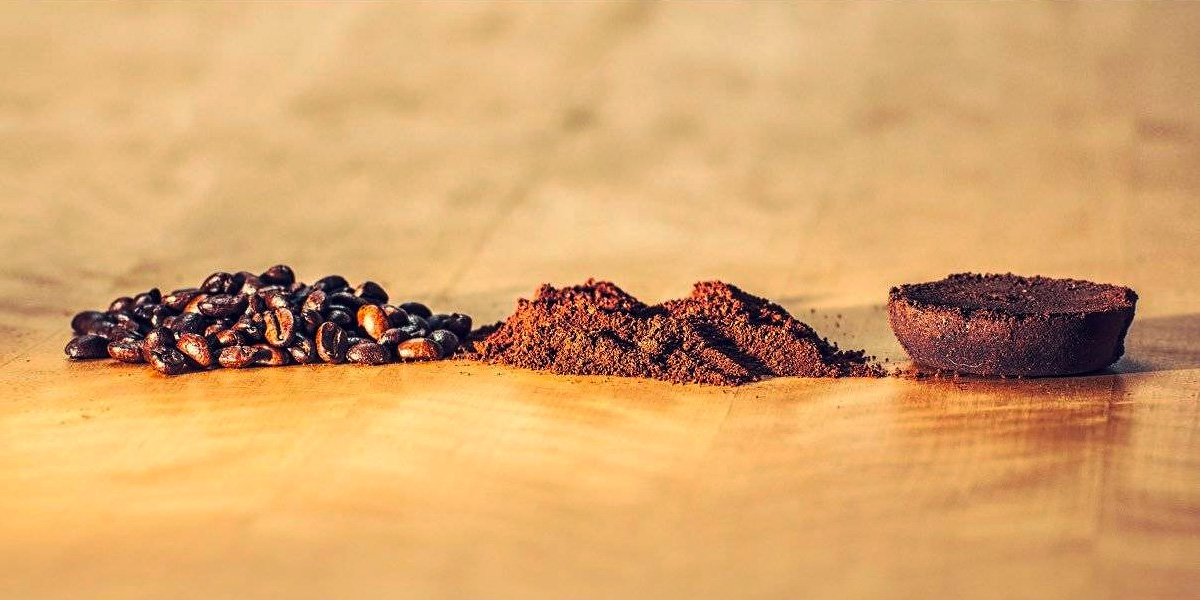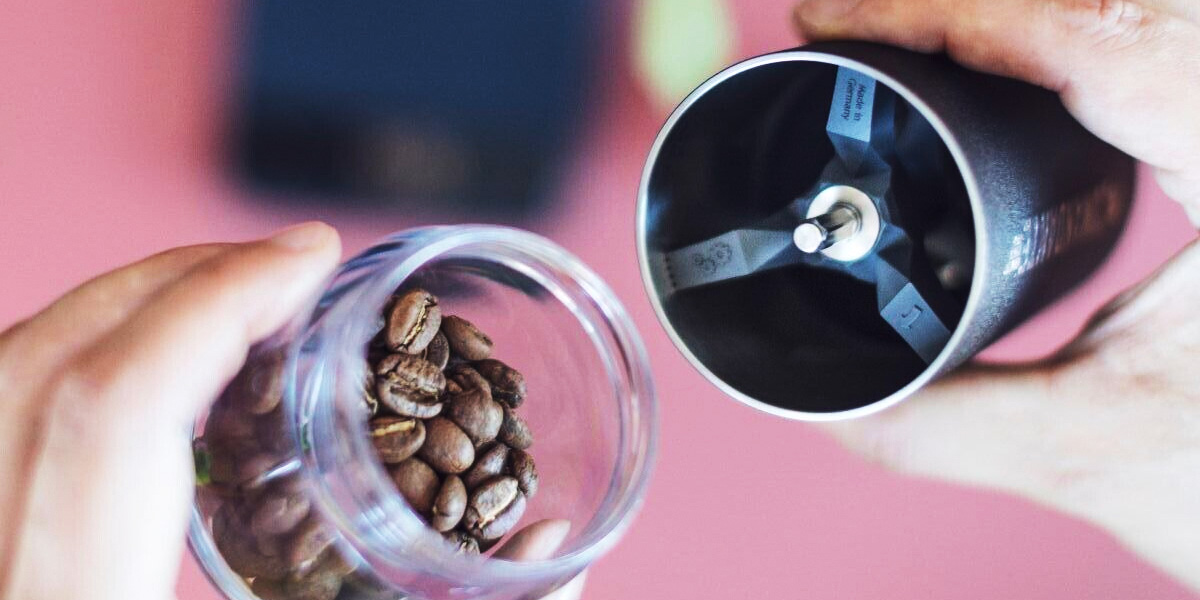Could not save your registration. Please try again.
Great, you are now registered. Welcome to the club and look forward to our updates.
Suitable for portafilter and fully automatic machines.
Coffee drinks
Preparation
Label
Drinks
Espresso
Organic / Demeter
Fresh Coffee service
Coffee machines including home barista training for 2 people
What type of portafilter?
Which pump?
How many boilers?
Perfect espresso with almost no energy
Freshly ground coffee tastes better.
Typ of Grinder
Dosage
Grind by hand
The tools for the barista
For better preparation
For clean preparation
Brands
White, colored and thick-walled cups.
Coffee cups
The tea cups & tableware
Clean the coffee maker and grinder regularly.
Für besseres Kaffeewasser
The great classic teas & tea types
The infusions & infusion drinks
The main tea growing areas
Sweet specialties with coffee
Chocolate bars
Chocolate drinks
Es ist immer eine gute Idee etwas schönes zu schenken.
Ob Bohnen, Pads oder Kapseln – jedes Bundle ist perfekt abgestimmt.
Kaffeebohnen
E.S.E. Pads
Kapseln
Von Klassikern bis Geheimtipps: Ideen à gogo für alle Kaffeeliebhaber.
Kaffee Label
Kaffee Spezial
Wächst Kaffee in der Erde, auf einem Baum, als Strauch?
Vom äthiopischen Hochland bis zur globalen Kaffeekultur
Alles was du für die Kaffeezubereitung brauchst
Zubereitung mit Druck
Zubereitung ohne Druck
Entdecke die beste Kaffee Ausrüstung
Siebträger Kaffeemaschinen
Filterkaffee Zubereitung
Kaffeemühlen
das passende Zubehör
Feel the Kaffeezentrale
Opinions and music
Ordering online is easy
Best day and night
Everything that is right
Get rid of enthusiasm
The last 25 seconds
Known how

A coffee grinder is at least as important for preparing good coffee as the espresso machine or brewing method. Coffee grinders are available for every application and in different price ranges. Here we describe the most important differences between espresso grinders, filter coffee grinders, conical and flat grinding discs, electrically operated and hand-operated grinders; because, freshly ground coffee tastes best.
A coffee grinder always consists of a grinding chamber in which a movable, adjustable grinder grinds coffee beans and discharges the resulting coffee grounds through an opening for use. The grinder is operated manually or electrically, and the necessary power is applied to the moving parts of the grinder via a shaft. These are the core elements of a grinder. The various coffee grinders differ in these features and thus determine where their strengths and weaknesses lie.
Coffee grinder types differ in the control of the motor running time and the presence of a dosing chamber. The motor running time can be controlled by a timer or a scale. With "grind on demand", the grinder grinds for a time predefined by the user and thus generates a relatively constant reference quantity. The disadvantage is that the grind must be adjusted after each change of grind. With "grind by weight", a load cell controls the motor running time. The user can set the desired amount of powder in grams and, depending on the quality of the system, receives a very constant and adequate amount â€" regardless of the grind, bean density or bean size. The disadvantage here is that the technology is not yet fully developed.
The dosing grinder (or espresso grinder) works in exactly the same way as an on-demand grinder. The only difference is that coffee is ground in an upstream dosing chamber from which it is dosed into the portafilter. This grinder is still the fastest way to obtain coffee powder. However, the ground coffee quickly loses its aroma if it remains in the container for longer. Opposite the espresso grinder is the shop grinder. It is characterised by its robust and simple design. An  "on/offÂ" button, a grinder regulator, an easily accessible bean feeder and, if necessary, a bag holder make up the shop grinder. The powerful motors and simplicity allow different (pre-portioned) coffees to be ground quickly, so the user can easily switch from the rare espresso to the exquisite filter and work with the same grinder. The disadvantage is the additional work steps (inserting beans each time, pre-portioning, re-weighing).
The two main players among the grinding discs are conical and flat grinding discs. In conical grinding discs, there is usually a central cone with sharp edges of different depths milled into it in a circumferential ring that has a similar tooth pattern. Together they form the grinding gap, the distance between the grinding discs, which together with the tooth depth determines the degree of grinding (i.e. the fineness of the coffee grounds). In most cases, the central, conical part rotates. There are a few, newer models where the outer ring rotates.
Flat grinding discs usually consist of very similar or even identical pairs of grinding discs. Two rings, where one is stationary and the other is rotating. The beans fall centrally into the grinding mechanism and are driven into the grinding gap. The distance between the two grinding discs and their tooth depth also determine the fineness here. Flat grinding discs can be arranged horizontally or vertically.
The performance of a mill depends on its motor and grinding disc. The motor drives the rotating grinding disc via a shaft. In the case of very hard beans (light roast, high density), the motor may not be able to apply the necessary torque and the mill may jam. The grinding disc and its rotational speed are decisive for the available grinding capacity (grams of coffee powder per second).
When buying a coffee grinder, there are three simple decisions to make beforehand. The following points will help you find the right grinder:
An espresso grinder can grind espresso and, if necessary, café crème. A coarser grind of filter coffee is not achieved with a classic espresso grinder, just as it usually cannot achieve the finer grind for Ibrik. A shop grinder, however, may be able to grind everything from espresso or even Ibrik to filter, but it is much more complicated to handle than an espresso grinder.
How much coffee should be prepared in what time with the grinder? A modern hand grinder can grind espresso and filter coffee, can be taken along on trips and costs much less than an electric grinder. However, if you make a lot of coffee and value convenience, a hand grinder is not recommended.
When choosing a coffee grinder for the home, café, office, restaurant or kiosk, it is important to consider not only the absolute amount of coffee consumed, but also its distribution over time. With a coffee grinder, it is the load peaks that give the machine trouble and subsequently also annoy the barista.
Make sure you plan your budget so that it is not just enough for a dream coffee machine. On the contrary: the quality of your coffee will thank you if you save on the espresso machine and buy a slightly more expensive grinder. However, your budget may have a significant influence on the above answers or limit your choices in advance.

A coffee grinder is at least as important for preparing good coffee as the espresso machine or brewing method. Coffee grinders are available for every application and in different price ranges. Here we describe the most important differences between espresso grinders, filter coffee grinders, conical and flat grinding discs, electrically operated and hand-operated grinders; because, freshly ground coffee tastes best.
A coffee grinder always consists of a grinding chamber in which a movable, adjustable grinder grinds coffee beans and discharges the resulting coffee grounds through an opening for use. The grinder is operated manually or electrically, and the necessary power is applied to the moving parts of the grinder via a shaft. These are the core elements of a grinder. The various coffee grinders differ in these features and thus determine where their strengths and weaknesses lie.
Coffee grinder types differ in the control of the motor running time and the presence of a dosing chamber. The motor running time can be controlled by a timer or a scale. With "grind on demand", the grinder grinds for a time predefined by the user and thus generates a relatively constant reference quantity. The disadvantage is that the grind must be adjusted after each change of grind. With "grind by weight", a load cell controls the motor running time. The user can set the desired amount of powder in grams and, depending on the quality of the system, receives a very constant and adequate amount â€" regardless of the grind, bean density or bean size. The disadvantage here is that the technology is not yet fully developed.
The dosing grinder (or espresso grinder) works in exactly the same way as an on-demand grinder. The only difference is that coffee is ground in an upstream dosing chamber from which it is dosed into the portafilter. This grinder is still the fastest way to obtain coffee powder. However, the ground coffee quickly loses its aroma if it remains in the container for longer. Opposite the espresso grinder is the shop grinder. It is characterised by its robust and simple design. An  "on/offÂ" button, a grinder regulator, an easily accessible bean feeder and, if necessary, a bag holder make up the shop grinder. The powerful motors and simplicity allow different (pre-portioned) coffees to be ground quickly, so the user can easily switch from the rare espresso to the exquisite filter and work with the same grinder. The disadvantage is the additional work steps (inserting beans each time, pre-portioning, re-weighing).
The two main players among the grinding discs are conical and flat grinding discs. In conical grinding discs, there is usually a central cone with sharp edges of different depths milled into it in a circumferential ring that has a similar tooth pattern. Together they form the grinding gap, the distance between the grinding discs, which together with the tooth depth determines the degree of grinding (i.e. the fineness of the coffee grounds). In most cases, the central, conical part rotates. There are a few, newer models where the outer ring rotates.
Flat grinding discs usually consist of very similar or even identical pairs of grinding discs. Two rings, where one is stationary and the other is rotating. The beans fall centrally into the grinding mechanism and are driven into the grinding gap. The distance between the two grinding discs and their tooth depth also determine the fineness here. Flat grinding discs can be arranged horizontally or vertically.
The performance of a mill depends on its motor and grinding disc. The motor drives the rotating grinding disc via a shaft. In the case of very hard beans (light roast, high density), the motor may not be able to apply the necessary torque and the mill may jam. The grinding disc and its rotational speed are decisive for the available grinding capacity (grams of coffee powder per second).
When buying a coffee grinder, there are three simple decisions to make beforehand. The following points will help you find the right grinder:
An espresso grinder can grind espresso and, if necessary, café crème. A coarser grind of filter coffee is not achieved with a classic espresso grinder, just as it usually cannot achieve the finer grind for Ibrik. A shop grinder, however, may be able to grind everything from espresso or even Ibrik to filter, but it is much more complicated to handle than an espresso grinder.
How much coffee should be prepared in what time with the grinder? A modern hand grinder can grind espresso and filter coffee, can be taken along on trips and costs much less than an electric grinder. However, if you make a lot of coffee and value convenience, a hand grinder is not recommended.
When choosing a coffee grinder for the home, café, office, restaurant or kiosk, it is important to consider not only the absolute amount of coffee consumed, but also its distribution over time. With a coffee grinder, it is the load peaks that give the machine trouble and subsequently also annoy the barista.
Make sure you plan your budget so that it is not just enough for a dream coffee machine. On the contrary: the quality of your coffee will thank you if you save on the espresso machine and buy a slightly more expensive grinder. However, your budget may have a significant influence on the above answers or limit your choices in advance.

A coffee grinder is at least as important for preparing good coffee as the espresso machine or brewing method. Coffee grinders are available for every application and in different price ranges. Here we describe the most important differences between espresso grinders, filter coffee grinders, conical and flat grinding discs, electrically operated and hand-operated grinders; because, freshly ground coffee tastes best.
A coffee grinder always consists of a grinding chamber in which a movable, adjustable grinder grinds coffee beans and discharges the resulting coffee grounds through an opening for use. The grinder is operated manually or electrically, and the necessary power is applied to the moving parts of the grinder via a shaft. These are the core elements of a grinder. The various coffee grinders differ in these features and thus determine where their strengths and weaknesses lie.
Coffee grinder types differ in the control of the motor running time and the presence of a dosing chamber. The motor running time can be controlled by a timer or a scale. With "grind on demand", the grinder grinds for a time predefined by the user and thus generates a relatively constant reference quantity. The disadvantage is that the grind must be adjusted after each change of grind. With "grind by weight", a load cell controls the motor running time. The user can set the desired amount of powder in grams and, depending on the quality of the system, receives a very constant and adequate amount â€" regardless of the grind, bean density or bean size. The disadvantage here is that the technology is not yet fully developed.
The dosing grinder (or espresso grinder) works in exactly the same way as an on-demand grinder. The only difference is that coffee is ground in an upstream dosing chamber from which it is dosed into the portafilter. This grinder is still the fastest way to obtain coffee powder. However, the ground coffee quickly loses its aroma if it remains in the container for longer. Opposite the espresso grinder is the shop grinder. It is characterised by its robust and simple design. An  "on/offÂ" button, a grinder regulator, an easily accessible bean feeder and, if necessary, a bag holder make up the shop grinder. The powerful motors and simplicity allow different (pre-portioned) coffees to be ground quickly, so the user can easily switch from the rare espresso to the exquisite filter and work with the same grinder. The disadvantage is the additional work steps (inserting beans each time, pre-portioning, re-weighing).
The two main players among the grinding discs are conical and flat grinding discs. In conical grinding discs, there is usually a central cone with sharp edges of different depths milled into it in a circumferential ring that has a similar tooth pattern. Together they form the grinding gap, the distance between the grinding discs, which together with the tooth depth determines the degree of grinding (i.e. the fineness of the coffee grounds). In most cases, the central, conical part rotates. There are a few, newer models where the outer ring rotates.
Flat grinding discs usually consist of very similar or even identical pairs of grinding discs. Two rings, where one is stationary and the other is rotating. The beans fall centrally into the grinding mechanism and are driven into the grinding gap. The distance between the two grinding discs and their tooth depth also determine the fineness here. Flat grinding discs can be arranged horizontally or vertically.
The performance of a mill depends on its motor and grinding disc. The motor drives the rotating grinding disc via a shaft. In the case of very hard beans (light roast, high density), the motor may not be able to apply the necessary torque and the mill may jam. The grinding disc and its rotational speed are decisive for the available grinding capacity (grams of coffee powder per second).
When buying a coffee grinder, there are three simple decisions to make beforehand. The following points will help you find the right grinder:
An espresso grinder can grind espresso and, if necessary, café crème. A coarser grind of filter coffee is not achieved with a classic espresso grinder, just as it usually cannot achieve the finer grind for Ibrik. A shop grinder, however, may be able to grind everything from espresso or even Ibrik to filter, but it is much more complicated to handle than an espresso grinder.
How much coffee should be prepared in what time with the grinder? A modern hand grinder can grind espresso and filter coffee, can be taken along on trips and costs much less than an electric grinder. However, if you make a lot of coffee and value convenience, a hand grinder is not recommended.
When choosing a coffee grinder for the home, café, office, restaurant or kiosk, it is important to consider not only the absolute amount of coffee consumed, but also its distribution over time. With a coffee grinder, it is the load peaks that give the machine trouble and subsequently also annoy the barista.
Make sure you plan your budget so that it is not just enough for a dream coffee machine. On the contrary: the quality of your coffee will thank you if you save on the espresso machine and buy a slightly more expensive grinder. However, your budget may have a significant influence on the above answers or limit your choices in advance.

A coffee grinder is at least as important for preparing good coffee as the espresso machine or brewing method. Coffee grinders are available for every application and in different price ranges. Here we describe the most important differences between espresso grinders, filter coffee grinders, conical and flat grinding discs, electrically operated and hand-operated grinders; because, freshly ground coffee tastes best.
A coffee grinder always consists of a grinding chamber in which a movable, adjustable grinder grinds coffee beans and discharges the resulting coffee grounds through an opening for use. The grinder is operated manually or electrically, and the necessary power is applied to the moving parts of the grinder via a shaft. These are the core elements of a grinder. The various coffee grinders differ in these features and thus determine where their strengths and weaknesses lie.
Coffee grinder types differ in the control of the motor running time and the presence of a dosing chamber. The motor running time can be controlled by a timer or a scale. With "grind on demand", the grinder grinds for a time predefined by the user and thus generates a relatively constant reference quantity. The disadvantage is that the grind must be adjusted after each change of grind. With "grind by weight", a load cell controls the motor running time. The user can set the desired amount of powder in grams and, depending on the quality of the system, receives a very constant and adequate amount â€" regardless of the grind, bean density or bean size. The disadvantage here is that the technology is not yet fully developed.
The dosing grinder (or espresso grinder) works in exactly the same way as an on-demand grinder. The only difference is that coffee is ground in an upstream dosing chamber from which it is dosed into the portafilter. This grinder is still the fastest way to obtain coffee powder. However, the ground coffee quickly loses its aroma if it remains in the container for longer. Opposite the espresso grinder is the shop grinder. It is characterised by its robust and simple design. An  "on/offÂ" button, a grinder regulator, an easily accessible bean feeder and, if necessary, a bag holder make up the shop grinder. The powerful motors and simplicity allow different (pre-portioned) coffees to be ground quickly, so the user can easily switch from the rare espresso to the exquisite filter and work with the same grinder. The disadvantage is the additional work steps (inserting beans each time, pre-portioning, re-weighing).
The two main players among the grinding discs are conical and flat grinding discs. In conical grinding discs, there is usually a central cone with sharp edges of different depths milled into it in a circumferential ring that has a similar tooth pattern. Together they form the grinding gap, the distance between the grinding discs, which together with the tooth depth determines the degree of grinding (i.e. the fineness of the coffee grounds). In most cases, the central, conical part rotates. There are a few, newer models where the outer ring rotates.
Flat grinding discs usually consist of very similar or even identical pairs of grinding discs. Two rings, where one is stationary and the other is rotating. The beans fall centrally into the grinding mechanism and are driven into the grinding gap. The distance between the two grinding discs and their tooth depth also determine the fineness here. Flat grinding discs can be arranged horizontally or vertically.
The performance of a mill depends on its motor and grinding disc. The motor drives the rotating grinding disc via a shaft. In the case of very hard beans (light roast, high density), the motor may not be able to apply the necessary torque and the mill may jam. The grinding disc and its rotational speed are decisive for the available grinding capacity (grams of coffee powder per second).
When buying a coffee grinder, there are three simple decisions to make beforehand. The following points will help you find the right grinder:
An espresso grinder can grind espresso and, if necessary, café crème. A coarser grind of filter coffee is not achieved with a classic espresso grinder, just as it usually cannot achieve the finer grind for Ibrik. A shop grinder, however, may be able to grind everything from espresso or even Ibrik to filter, but it is much more complicated to handle than an espresso grinder.
How much coffee should be prepared in what time with the grinder? A modern hand grinder can grind espresso and filter coffee, can be taken along on trips and costs much less than an electric grinder. However, if you make a lot of coffee and value convenience, a hand grinder is not recommended.
When choosing a coffee grinder for the home, café, office, restaurant or kiosk, it is important to consider not only the absolute amount of coffee consumed, but also its distribution over time. With a coffee grinder, it is the load peaks that give the machine trouble and subsequently also annoy the barista.
Make sure you plan your budget so that it is not just enough for a dream coffee machine. On the contrary: the quality of your coffee will thank you if you save on the espresso machine and buy a slightly more expensive grinder. However, your budget may have a significant influence on the above answers or limit your choices in advance.

A coffee grinder is at least as important for preparing good coffee as the espresso machine or brewing method. Coffee grinders are available for every application and in different price ranges. Here we describe the most important differences between espresso grinders, filter coffee grinders, conical and flat grinding discs, electrically operated and hand-operated grinders; because, freshly ground coffee tastes best.
A coffee grinder always consists of a grinding chamber in which a movable, adjustable grinder grinds coffee beans and discharges the resulting coffee grounds through an opening for use. The grinder is operated manually or electrically, and the necessary power is applied to the moving parts of the grinder via a shaft. These are the core elements of a grinder. The various coffee grinders differ in these features and thus determine where their strengths and weaknesses lie.
Coffee grinder types differ in the control of the motor running time and the presence of a dosing chamber. The motor running time can be controlled by a timer or a scale. With "grind on demand", the grinder grinds for a time predefined by the user and thus generates a relatively constant reference quantity. The disadvantage is that the grind must be adjusted after each change of grind. With "grind by weight", a load cell controls the motor running time. The user can set the desired amount of powder in grams and, depending on the quality of the system, receives a very constant and adequate amount â€" regardless of the grind, bean density or bean size. The disadvantage here is that the technology is not yet fully developed.
The dosing grinder (or espresso grinder) works in exactly the same way as an on-demand grinder. The only difference is that coffee is ground in an upstream dosing chamber from which it is dosed into the portafilter. This grinder is still the fastest way to obtain coffee powder. However, the ground coffee quickly loses its aroma if it remains in the container for longer. Opposite the espresso grinder is the shop grinder. It is characterised by its robust and simple design. An  "on/offÂ" button, a grinder regulator, an easily accessible bean feeder and, if necessary, a bag holder make up the shop grinder. The powerful motors and simplicity allow different (pre-portioned) coffees to be ground quickly, so the user can easily switch from the rare espresso to the exquisite filter and work with the same grinder. The disadvantage is the additional work steps (inserting beans each time, pre-portioning, re-weighing).
The two main players among the grinding discs are conical and flat grinding discs. In conical grinding discs, there is usually a central cone with sharp edges of different depths milled into it in a circumferential ring that has a similar tooth pattern. Together they form the grinding gap, the distance between the grinding discs, which together with the tooth depth determines the degree of grinding (i.e. the fineness of the coffee grounds). In most cases, the central, conical part rotates. There are a few, newer models where the outer ring rotates.
Flat grinding discs usually consist of very similar or even identical pairs of grinding discs. Two rings, where one is stationary and the other is rotating. The beans fall centrally into the grinding mechanism and are driven into the grinding gap. The distance between the two grinding discs and their tooth depth also determine the fineness here. Flat grinding discs can be arranged horizontally or vertically.
The performance of a mill depends on its motor and grinding disc. The motor drives the rotating grinding disc via a shaft. In the case of very hard beans (light roast, high density), the motor may not be able to apply the necessary torque and the mill may jam. The grinding disc and its rotational speed are decisive for the available grinding capacity (grams of coffee powder per second).
When buying a coffee grinder, there are three simple decisions to make beforehand. The following points will help you find the right grinder:
An espresso grinder can grind espresso and, if necessary, café crème. A coarser grind of filter coffee is not achieved with a classic espresso grinder, just as it usually cannot achieve the finer grind for Ibrik. A shop grinder, however, may be able to grind everything from espresso or even Ibrik to filter, but it is much more complicated to handle than an espresso grinder.
How much coffee should be prepared in what time with the grinder? A modern hand grinder can grind espresso and filter coffee, can be taken along on trips and costs much less than an electric grinder. However, if you make a lot of coffee and value convenience, a hand grinder is not recommended.
When choosing a coffee grinder for the home, café, office, restaurant or kiosk, it is important to consider not only the absolute amount of coffee consumed, but also its distribution over time. With a coffee grinder, it is the load peaks that give the machine trouble and subsequently also annoy the barista.
Make sure you plan your budget so that it is not just enough for a dream coffee machine. On the contrary: the quality of your coffee will thank you if you save on the espresso machine and buy a slightly more expensive grinder. However, your budget may have a significant influence on the above answers or limit your choices in advance.
 Espresso
Espresso Cappuccino
Cappuccino Café Crème
Café Crème Portafilter
Portafilter Fully automatic machine
Fully automatic machine Organic / Demeter
Organic / Demeter Fairtrade
Fairtrade Fresh service
Fresh service Single circle
Single circle Dual circuit
Dual circuit Vibration pump
Vibration pump Rotary pump
Rotary pump One boiler
One boiler Two boilers
Two boilers Manual machines
Manual machines ECM Manufcture
ECM Manufcture Rocket Espresso
Rocket Espresso La Marzocco
La Marzocco Aram
Aram Supercop
Supercop Cafelat
Cafelat Disc mill
Disc mill Cone grinder
Cone grinder Dosage by time
Dosage by time Dosage by weight
Dosage by weight Hand mills
Hand mills Tamper
Tamper Milk jug
Milk jug Weighing & Measuring
Weighing & Measuring Microfiber cloths
Microfiber cloths Knockout boxes
Knockout boxes SINIS
SINIS Motta
Motta Ilsa
Ilsa Espresso (80 ml)
Espresso (80 ml) Cappuccino (200 ml)
Cappuccino (200 ml) Flat white (150 ml)
Flat white (150 ml) Latte (300 ml)
Latte (300 ml) Brewers
Brewers To Go Cup
To Go Cup Cupping
Cupping Cortado
Cortado Degreaser
Degreaser Descaler
Descaler Mill Cleaner
Mill Cleaner Milk Cleanser
Milk Cleanser Direct water filter
Direct water filter Black tea
Black tea Green tea
Green tea White tea
White tea Oolong tea
Oolong tea Herbal tea
Herbal tea Fruit tea
Fruit tea Rooibos tea
Rooibos tea China
China India
India Japan
Japan South Africa
South Africa Sri Lanka
Sri Lanka Switzerland
Switzerland Sirocco tea
Sirocco tea Länggass Tea
Länggass Tea Avantcha tea
Avantcha tea Black chocolate
Black chocolate Chocolate beans
Chocolate beans Amaretti
Amaretti Cantuccini
Cantuccini Gutschein 50.00
Gutschein 50.00 für Espresso
für Espresso für Espresso
für Espresso Demeter Kaffee
Demeter Kaffee Viva Italia
Viva Italia Reinigung Tools
Reinigung Tools Cappuccino
Cappuccino Latte Macchiato
Latte Macchiato Espresso Macchiato
Espresso Macchiato Handfilter
Handfilter Aero Press
Aero Press French Press
French Press Moka Kanne
Moka Kanne Cold Brew
Cold Brew alles über Kaffeemühlen
alles über Kaffeemühlen Kaffeestation für zu Hause
Kaffeestation für zu Hause Tamper & Leveler
Tamper & Leveler Wägen & messen
Wägen & messen personal consultation
personal consultation Telephone consultation
Telephone consultation individual training
individual training Repair & Service
Repair & Service Coffee shop is open
Coffee shop is open Podcast coffeehouse
Podcast coffeehouse Payment options
Payment options Shipping & Collection
Shipping & Collection Two years guarantee
Two years guarantee Coupons & Discount
Coupons & Discount Contact
Contact Newsletter
Newsletter Social media
Social media GTC's
GTC's Privacy
Privacy Disclaimer
Disclaimer Return & Returns
Return & Returns Imprint
Imprint Google Business
Google Business perfect espresso
perfect espresso Flavors & Taste
Flavors & Taste the right water
the right water